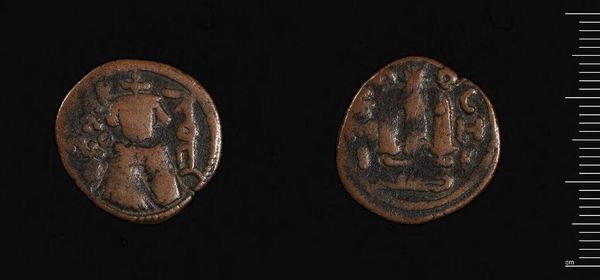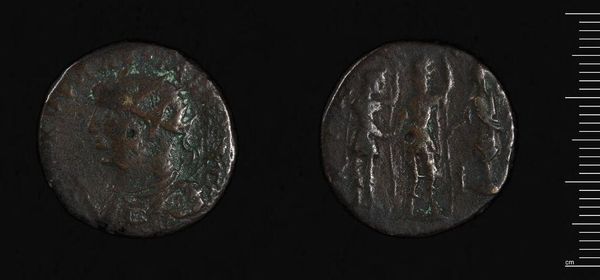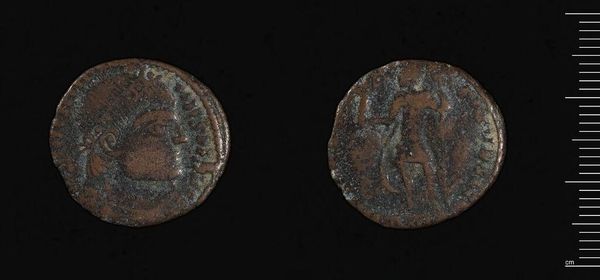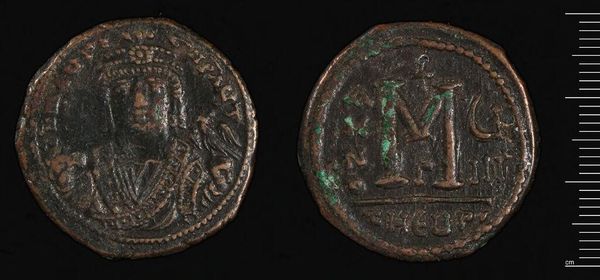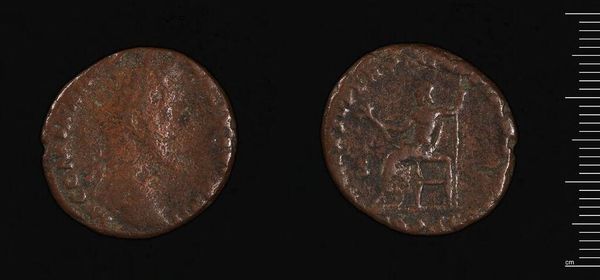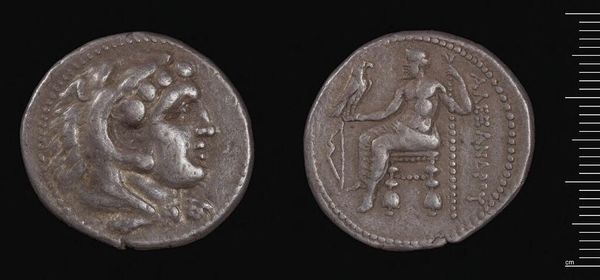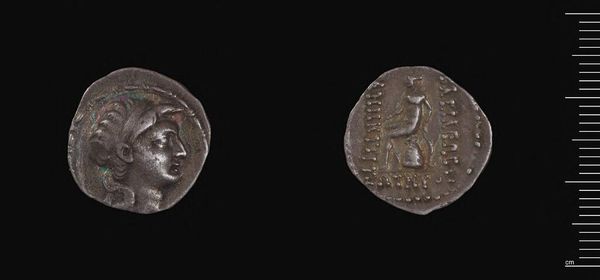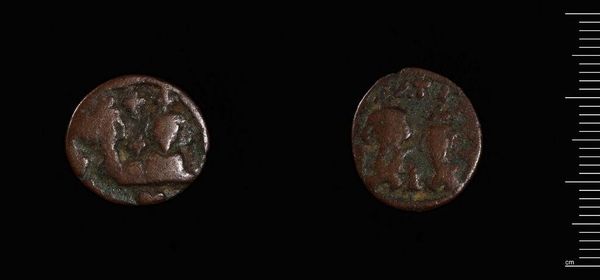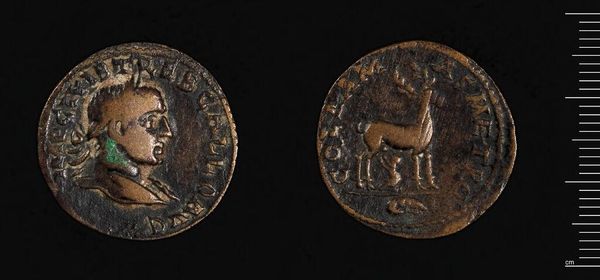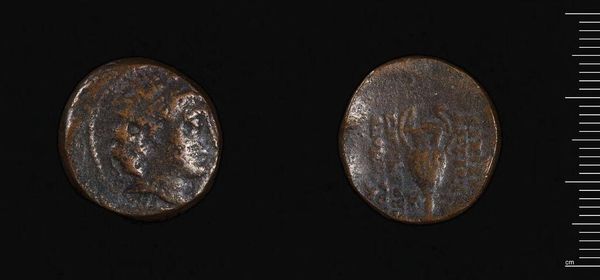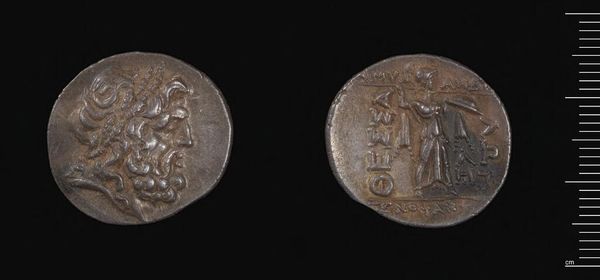
Dimensions: 7.16 g
Copyright: CC0 1.0
Curator: Before us is a diobol of Alexandria, dating back to the reign of Antoninus Pius. It's a humble coin, isn’t it? Editor: It has a certain weight about it, literally and figuratively. I'm immediately drawn to the material, the copper alloy, and the marks of wear. It speaks to its journey through countless hands. Curator: Indeed. On one side, we see the idealized portrait of Antoninus Pius, a symbol of imperial power and authority. On the other, the sacred bull Apis, a deity revered in ancient Egypt for its virility and connection to royalty. Editor: These coins acted as a form of mass production, spreading the emperor’s image and power across a wide range of social classes. The very act of minting these coins solidified the emperor's control over resources and trade. Curator: Absolutely. The Apis bull isn't simply a decorative element; it represents the enduring strength and divine favor associated with the emperor's reign. Editor: I find myself pondering the hands that labored to mine the metal, strike the die, and circulate this coin. Such a small object carries such a large social context. Curator: It's a reminder that even the smallest artifacts can hold profound meaning. Editor: Quite so, the means of production and iconography are so intertwined, it’s easy to get lost in history.
Comments
No comments
Be the first to comment and join the conversation on the ultimate creative platform.
